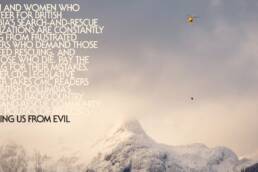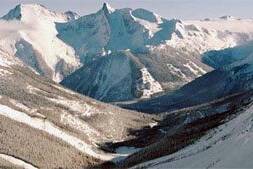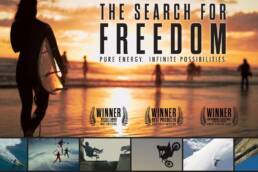The latest Coast Mountain Culture Magazine article about BC’s search-and-rescue program and its funding has sparked media attention. CBC Victoria and CBC Vancouver recently interviewed the story’s author Jeff Davies and politicians are beginning to take note about SAR’s cost benefits. Here is the story that started it all.
Julie Abrahamsen doesn’t look like a troublemaker. In news photos, she looks, in fact, like the picture of Scandinavian innocence: eager smile, long, blonde hair, blue eyes. But in the British Columbia court of public opinion, Abrahamsen was sentenced to swift justice.
On a mild and overcast day in January 2015, with temperatures hovering around freezing, the 20-year-old Norwegian ventured out into the backcountry of Blackcomb Mountain, following a group of hikers, past a sign warning them to be prepared and take the proper safety gear. She soon became separated from the group and lost her way. But rather than backtracking, she simply continued downhill, searching for a way out; a natural inclination, perhaps, to anyone used to travelling in the more populated mountain terrain of Europe, but it is dangerous and potentially fatal in the vast British Columbian backcountry. For three days, Abrahamsen plodded on, finding shelter the first night under a rock, the second under a log and the third under a tree. Incredibly, she even tried to cross a swollen and icy stream and ended up wading and swimming downstream.
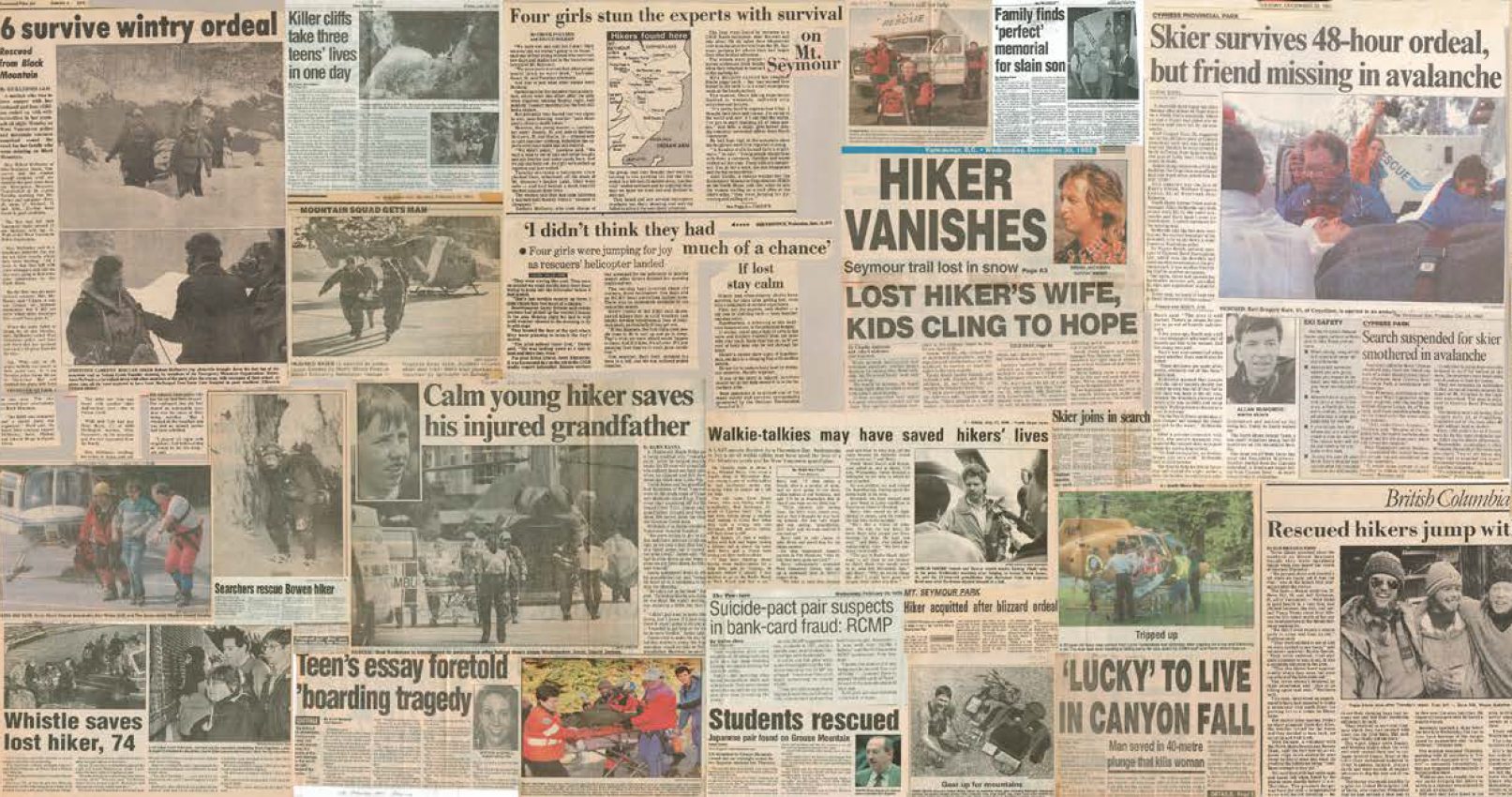
Abrahamsen had been in the mountains alone two nights before the authorities were alerted. And by this time, the weather had closed in. Vincent Massey, a 30-year veteran of Whistler Search and Rescue (SAR), describes the conditions as “hosing torrential West Coast rain.” Whistler SAR had to wait another day to get a chopper in the air. By the time searchers headed out, they had little hope of finding her alive. But they spotted her tracks leading to the stream, up and over a log jam, and then re-emerging downstream.
“So we got out of the helicopter at one of these big long jams,” Massey recalls, “and we put on our touring gear and went after the tracks for an hour, hour-and-a-half, until we found her hunkered down under a tree.” She was exhausted, wet, but very much alive “and grateful to know her three-day ordeal was over,” says Massey. The searchers whooped with joy. Abrahamsen was sheepish about having to be rescued. “Very, very humble,” Massey says.
Her remarkable story of survival in the wilderness made news internationally. Later, fielding questions from reporters, the young Norwegian came across as “calm, almost blasé,” according to one news report. She said she’d do things differently in the future, take the proper precautions, but she might well go out of bounds again. In the media, her words came across to many as cavalier and reckless.
The reaction in online forums was harsh. Stick her with the bill for the rescue, many demanded. Send her back to Norway ASAP. One letter published in a Whistler newspaper said search-and-rescue officials were rewarding bad, stupid behaviour by not billing Abrahamsen. But that, of course, is the policy for SAR teams across British Columbia, and it’s one Vincent Massey supports. And, he notes, one fact not in the news reports: Julie Abrahamsen’s father actually took the time to fly to British Columbia from Norway to thank the searchers personally—and give them a $5,000 donation.
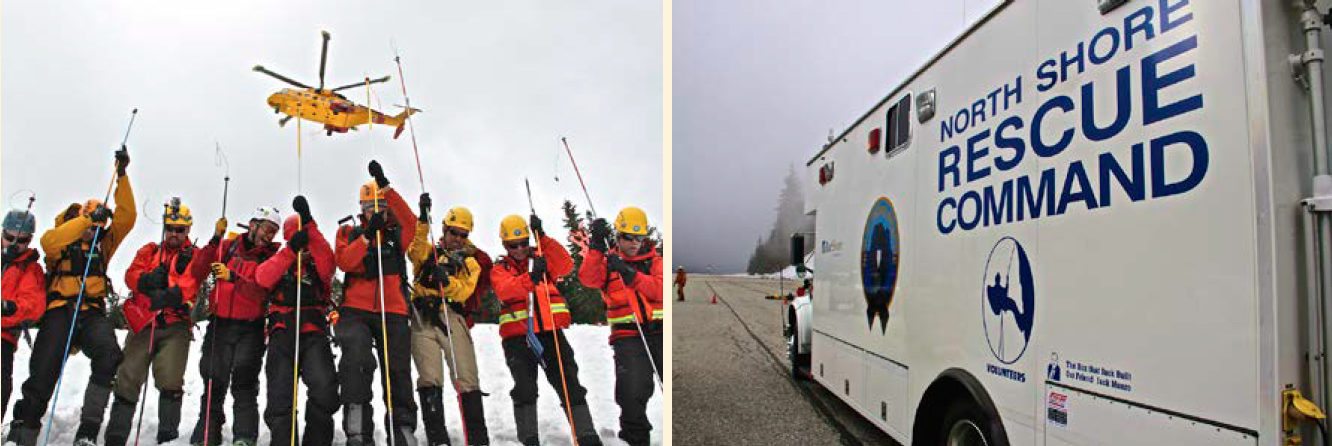
On the one hand, Massey says, Julie Abrahamsen’s misadventure was a classic case of someone making bad decisions in the backcountry: going alone, not telling her friends her plan, not heeding warnings to carry avalanche gear, failing to retrace her steps when she got in trouble. But she also showed she was tough and tenacious, earning the respect of her rescuers, particularly Massey, the first to reach her. “When you hear somebody is from Norway, you think she’s got to be part Viking to do this.” Bring on the horned helmet.
But, says Massey, spare us the debates on social media of the “who-are-these-idiots-taking-risks-and-why-should-my-tax dollars-pay-to-rescue-them?” nature.
“I wish people wouldn’t say that,” he says. “They don’t really understand that people do make mistakes and it can happen to anybody.”
Keep in mind, it’s the SAR members who are putting their lives on the line to perform rescues. And, as Massey says, “we’re mountain people.” These are people who spend their spare time climbing and hiking, whitewater kayaking and backcountry skiing. You don’t get to be a SAR team member by skiing the groomers.
Take Finbar O’Sullivan. He’s 63, greying, a little portly, with a walrus moustache. He speaks the language of one who has spent a lifetime in the backcountry mountaineering and skiing. “Unless there’s some element of risk, there’s no adventure,” he says. “It’s like going shopping on Black Friday.”
The BC Wilderness Tourism Association says its industry puts $1.5 billion dollars a year into the economy and generates more than $400 million in tax revenues. The cost of search and rescue must be seen against that backdrop.
In his early days, O’Sullivan was struck by avalanches three times, twice knocked unconscious. His friends dug him out. Today he’s giving back, as a searcher, ski patrol and avalanche trainer at Apex Mountain, near Penticton, British Columbia. Now he ponders the big questions once more: Would you take a fee from someone you rescued, especially if that person made foolish decisions? It’s tough, he says. Who gets to decide what kind of behaviour is foolhardy? He cautions against judgements made “from the comfort of the couch.” However, he says, “There are some who are blatantly idiotic, the guy who is pissed drunk and decides to do the Grouse Grind, as opposed to the guy who is well equipped and slips and breaks his ankle.” In the end, O’Sullivan says, he would never charge stranded skiers or hikers to go out and save them. But he might sit them down later for a little tough talk.
Others in O’Sullivan’s crowd suggest billing skiers or hikers for mishaps in the backcountry is a slippery slope, no pun intended. Relaxing after a day in the powder at Apex, Johnny “Smoke” Matthews asks about people with unhealthy lifestyles? “It’s probably a mistake to start smoking or to eat that many potato chips and sit on the sofa and become a beast. Those kinds of expenses are probably much more expensive than these one-time [SAR] expenses.”
[divider type=”line” margintop=”20″ marginbottom=”20″]
If the search-and-rescue community in western Canada has hallowed ground, you’ll find it in a nondescript grey building, beside a railway line in North Vancouver. It is the city’s municipal works yard. But this is also the base of the iconic North Shore Rescue.
NSR was involved in 139 rescue operations in 2015. Only two—that’s right, two—involved out-of-bounds skiers, despite the fact those stories tend to dominate the media. Fourteen were “walkaways,” a category that can include anything from lost kids to wandering seniors struggling with dementia. One was a hang-glider pilot, three were climbers, five mountain bikers, one a suicide attempt. But the majority, 89, were hikers, an activity that’s perfectly legal in an area dotted with parks and crosshatched with hiking trails, albeit trails that can be dangerous for the ill prepared.
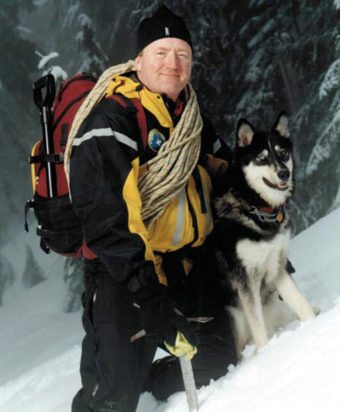
Step into NSR’s lobby and you enter a shrine: on the wall is a framed photo of the late Tim Jones, the long-time team leader of North Shore Rescue. A ruddy-faced and barrel-chested man, Jones might pass for a barroom bouncer. Indeed, he’s dubbed “Knuckles” in the photo. An Order of BC medallion hangs around his neck. Jones is credited with saving 1,600 lives. He spent his professional career as a paramedic, but he also devoted 26 years to volunteering with North Shore Rescue. Like all others team members named on the plaque below his photo, he never took a cent for his work. Sadly, Jones died suddenly of a heart attack in January 2014 at age 57. But his presence is still felt throughout the base, the North Shore and the whole search-and-rescue community.
On the walls, there are clippings, photos and letters, awards and testimonials. Some tell haunting stories, such as that of the 22-year-old British hiker Tom Billings, who ventured into the mountains and vanished without a trace for almost three years before his remains were found, despite a massive manhunt on the North Shore. But perhaps the most arresting is a simple card with a handprinted message from someone named James Martin, rescued from Mount Seymour in 2008. “Dear North Shore Rescue, your efforts will never be forgotten. As I stare at the beautiful mountainside you saved me from, I can’t help the tears. You are the bravest people I know. Forever in my heart.”
It’s a stark reminder that the North Shore, British Columbia’s most accessible wilderness recreation area, is, ironically, among its most dangerous. The tourist websites usually show those mountains bathed in sunshine and capped with snow, and they beckon visitors. The reality, for much of the year, is quite different: extreme weather changes, sun that gives away to dense fog and driving rain, and rugged terrain punctuated with cliffs and chasms. Take a wrong turn on the North Shore and you can pay for it with your life.
That’s where NSR comes in. With Tim Jones now gone, the job of team leader has fallen to Mike Danks, a young man with a lean build, a boyish grin and a shock of dark hair. By day, he’s a North Vancouver firefighter, as well as a husband and father to three young girls. “Sorry, it’s a bit of a mess in here,” Danks says, as we enter the cavernous storeroom. There’s a sign on the wall proclaiming “The Embassy, home of North Shore Rescue.” Helmets, running shoes and backpacks are strewn on the floor. Racks are stacked almost to the ceiling with brightly coloured duffels and drybags. Three sturdy rescue vehicles, packed with everything from first-aid gear to oxygen, blankets and body bags, are ready to go.
One fact not in the news reports: Julie Abrahamsen’s father actually took the time to fly to British Columbia from Norway to thank the searchers personally – and give them a $5,000 donation.
I’ve arrived in the middle of a training session; members are learning the ropes, literally, so they be recertified for swift-water rescues. There are a dozen team members present, some standing, a few sitting, some slumped on the couch, but all eyes are on the professional trainer, Scott Streadwick, of Raven Rescue. There is little of the belly-bumping bravado one might expect in this all-male gathering. “It’s a dedicated group of people,” Streadwick says. “It’s a huge commitment and a way of giving back to the community.”
How big a commitment? “I don’t keep that close a track,” says team member Jim Loree, “but 400 hours a year is not out of possibility. Training every Tuesday. There’s usually a training day one weekend a month, there’s fundraiser stuff, there’s call-outs, educational things, equipment maintenance… It’s a challenge.”
So why do it? “Because I love it,” Loree says. “It helps other people. It’s a great experience. It’s pretty amazing to see somebody who thinks they are going to die and not be rescued, and all of a sudden you show up and they’re so happy and grateful to see you.”
If there’s one other point on which all SAR members agree, it’s the insistence that SAR teams not charge user fees to anyone they rescue. It’s simply impractical, they say, and would make rescues more difficult and dangerous.
Tim Jones was passionate on this issue all his life. He had no hesitation calling out reckless hikers or skiers, those who were ill prepared or who were endangering their own lives or those of SAR teams. But he would not accept payment. Today, North Shore Rescue’s website cites half a century of experience to back up its policy: “We have seen many calls where family have been under the impression that they would be charged, and delayed their calls for help. Another situation we run into is a subject being under the impression they would be charged and avoiding rescuers.”
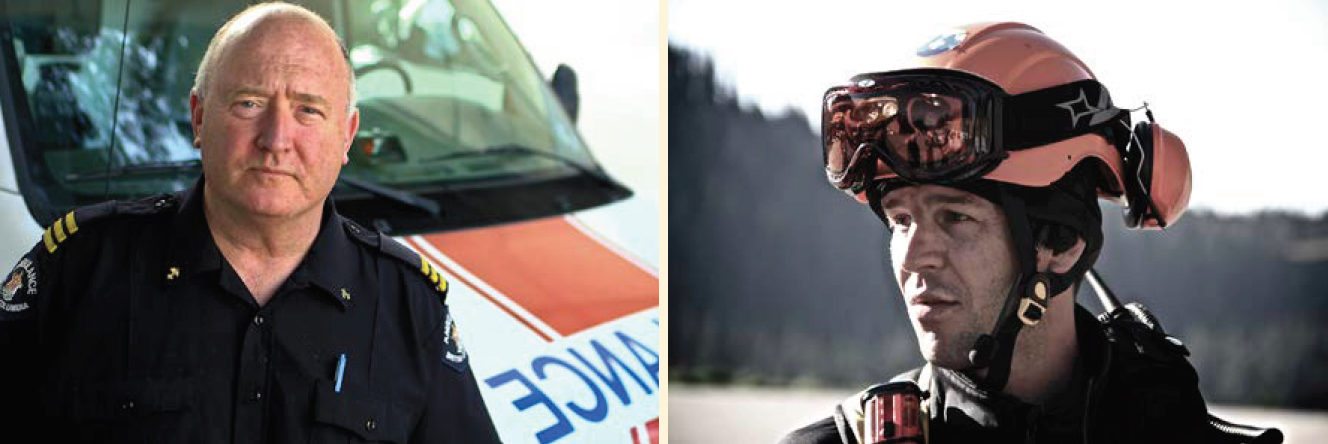
One way or another, SAR team members fear, if they`re operating on a fee-for-service basis, the calls will come late, and they’ll end up performing rescues in the dark, under far more difficult and dangerous conditions, with the subjects now hypothermic, incoherent or worse. As one search trainer in the Okanagan puts it, if we charge fees we recover bodies. If it’s free we rescue living people. They’re not idle fears. Almost every searcher can cite examples of searches that were delayed because stranded adventurers or their families feared being billed. An incident last winter at Whitewater Ski Resort, near Nelson, British Columbia, is a good illustration.
Joe Vingo, a veteran member of Nelson Search and Rescue, was ski touring in the backcountry in January with some buddies when they saw another party of skiers who appeared to be in trouble. They were expert skiers from Washington State, very well equipped and experienced, Vingo says, but one had apparently torn a knee ligament. An orthopedic surgeon also skiing nearby performed first aid, but the skiers were trying to make their own way out. It would have taken until well after dark.
“I said, ‘We really should get you a helicopter,’” Vingo recalls. “And they said, “We can’t afford it.’ And I laughed and said everything is free in Canada. And then I said, ‘Do you want me to get a helicopter?’ And they said, ‘Can you do that?’ And I said, ‘You bumped into the right guy.’” As they headed out later, Vingo says, a member of the party gave one of Vingo’s buddies all his cash. “Just about enough to buy a pitcher of beer and poutine.” The day ended well.
A ruddy-faced and barrel-chested man, Tim Jones might pass for a barroom bouncer. Indeed, he’s dubbed “Knuckles” in the photo. An order of British Columbia medallion hangs around his neck. Jones is credited with saving 1,600 lives. He spent his professional career as a paramedic, but he also devoted 26 years to volunteering with North Shore Rescue.
It might have been different south of the border. Search and rescue in Washington State, as in British Columbia, is performed by volunteers who don’t charge fees. But if they have to contract a private helicopter, the bills can be in the thousands.
The BC Search and Rescue Association has spent years listening to taxpayers’ demands to levy fees but came to the conclusion it would be counterproductive. “It would be a burdensome process likely resulting in very little incremental revenue,” BCSARA said in a submission to the provincial government.
As BCSARA President Chris Kelly points out, the provincial government has the legal right to seek payment from anyone who causes an emergency. But neither he nor Special Projects Director Jim McAllister, who drafted the brief, can recall a case where Emergency Measures BC has actually billed someone for a backcountry rescue.
McAllister disputes the notion popular in online forums that anyone who needs a rescue must have done something stupid or illegal. “I’ve probably been out on 350 calls while I was active in the field,” says McAllister, “and people often talk about these stupid people out there, and I often go on blogs and say that in 350 calls, I’ve never run across a stupid person.” He goes on to explain that he’s seen people “who have had misfortune, or somebody who has made a bad decision, but I’ve never run across a stupid person.”

Also, as McAllister and Kelly note, those who are rescued are typically very grateful and often donate generously to SAR. It’s a major source of income: about $1.5 million a year comes from donations and fundraising.
Consider the case of Sebastien Boucher. In December 2012, he was headed to Cypress Mountain, on Vancouver’s North Shore, to carve a few quick runs in some fresh powder. On his way up, he got a call telling him his best friend had died. A distraught Boucher sought solace in the backcountry. But an overhang collapsed, leaving him injured and floundering in three metres of snow.
Boucher thought he was going to die. Then, on the third day, Tim Jones and a couple of his SAR teammates showed up to rescue him. Boucher doesn`t want to judge others who get in trouble in the backcountry, but he says, “If there’s one thing I can say, it’s that if somebody is going to put their lives at risk to help you, maybe you should do something for them to show appreciation.”
Although SAR teams don’t issue bills, ski-resort operators can do so to recover their own costs. The operators of the Cypress Mountain ski area said they would bill Boucher $10,000. He decided to take matters into his own hands. He and his family and friends organized a fundraising hockey tournament back in Ottawa with a bar and canteen. They topped up the receipts with their own cash and presented a cheque for $10,000 directly to North Shore Rescue.
If there’s one other point on which all SAR members agree, it’s the insistence that SAR teams not charge user fees to anyone they rescue. It’s simply impractical, they say, and would make rescues more difficult and dangerous.
It’s worth noting that out-of-bounds skiing is subject to different rules at different ski resorts, according to the terrain and the proficiency of the skiers. Cypress Mountain warns skiers not to cross ropes or boundaries whatsoever.
But at Whistler Blackcomb, the backcountry is a major part of the resort’s marketing pitch. Skiers and boarders are told they can venture outside the boundaries, but they’re required to take avalanche gear. “The Whistler backcountry is magical and an incredible place to spend time. As life around us speeds up, the appeal of solitude and silence becomes that much greater. Don’t be fooled by the beauty, however; you need to know what you’re doing out there.”
Then there’s the Whitewater Ski Resort, near Nelson, which lures powder hounds to the backcountry by offering a discount if they just want to ride the lift once and venture out of bounds. That is, if they first sign a legal waiver and understand the risks.
Also consider that 94 per cent of British Columbia is Crown land, much of it open to recreation with few restrictions, and promoted as “Super Natural BC.” The world has heeded the call: the BC Wilderness Tourism Association says its industry puts $1.5 billion dollars a year into the economy and generates more than $400 million in tax revenues. The cost of search and rescue must be seen against that backdrop.

Certainly the demand is growing faster than a sturdy hiker climbing the Grouse Grind. Rescue operations have increased by nearly 400 per cent in 25 years. But BC Search and Rescue says funding has not kept up. It’s now about $9.4 million a year, $3 million less than the association estimates it needs.
If the searches were performed by professionals, BC Search and Rescue estimates, the cost, “based on RCMP constable wages, would exceed $20 million; including training and administration this would likely exceed $50 million, a good return on investment!”
As it is now, the only paid staff member is a part-time receptionist. Gaming grants, donations and fundraising cover about 45 per cent of the search-and-rescue budgets. The remainder comes from a host of government agencies and programs, much of it from Emergency Measures BC, but organizers have to reapply every year for those grants. Jim McAllister of BCSARA says that makes it very difficult to plan ahead. How are you supposed to know how many people will get stranded in the outdoors? What the SAR teams really want is stable, predictable funding.
BCSARA’s brief lists a number of options to raise money, including surcharges on hunting and fishing licences, alpine ski-lift tickets, snowmobile registration, camping fees and sales of outdoor equipment. But it pointedly does not endorse any of those ideas. The reaction, it says, from some user groups has been “very negative.” Ski hills, for example, felt a surcharge on lift tickets would be bad for business and would be unfair because only 3 per cent of searches involve out-of-bounds skiers. The association also questions whether it would be practical to require rescue insurance, a common practice in some European countries.
Abrahamsen had been in the mountains alone two nights before the authorities were alerted. And by this time, the weather had closed in. Vincent Massey, a 30-year veteran of Whistler Search and Rescue (SAR), describes the conditions as “hosing torrential West Coast rain.”
Naomi Yamamoto, British Columbia’s minister of state responsible for Emergency Measures BC says she’s listening to BCSARA and considering their brief. “We have to respect the folks who are actually going out and volunteering and that’s their wish,” she says. The minister agrees search and rescue should be a free service and adds searchers “shouldn’t have to hold bake sales” to buy equipment or get training to save lives. Last winter, Yamamoto announced a one-time boost of $10 million dollars for just those purposes. And so the province’s search-and-rescue teams must depend on public and political goodwill, as well as the gratitude of those they have rescued.
Back in North Vancouver, it’s a big night for the search-and-rescue community: a fundraiser for the Tim Jones Legacy Fund at Seymour’s Pub. The beer and conversation are flowing. Politicians are schmoozing. Diners are munching burgers and noodles. There’s a silent auction. And money is coming in. Organizers are hoping to raise $15,000 or more to go into a long-term investment.
Tim Jones’ framed photo is a centrepiece in the silent auction. There’s a special announcement: BC Parks has posthumously named Jones winner of its 2015 volunteer legacy award. His son, Curtis Jones, is there to reflect on his father’s legacy. Like his dad, he’s a powerfully built man and a member of NSR. He wants to continue the policy of not charging for rescues. “It’s his idea that search and rescue is better done by volunteers who have an outdoor recreation background. My dad was passionate about that,” says Jones. “It’s about letting people know they’re safe when they’re out there. If something goes wrong you can count on North Shore Rescue, Squamish Search and Rescue, whoever, they’ll come and get you.”
Jeff Davies is a freelance writer and retired CBC political reporter based in Victoria, British Columbia. He left the legislative press gallery in 2012 to spend more time enjoying the great outdoors and writing about it. He once flipped a canoe in the Cowichan River and the local search-and-rescue team was alerted. Davies’ mailbox in the BC legislature carried the tag “Mr. Canoe Head” for the remainder of his time there. This is Jeff’s first story for Coast Mountain Culture Magazine.
Related Stories
Stop Getting Lost: Here’s How You Can Help BC’s Search And Rescue Groups
Of the 78 search and rescue groups in British Columbia, those in the Lower Mainland and Okanagan are the busiest.…
STAND movie hits BC in early May
From our Friends Anthony Bonello of b4apres Media, and Nicolas Teichrob, photographer comes the cinematic premier of…
Creaking Tree String Quartet touring BC
Two time Juno nominees, The Creaking Tree String Quartet are coming to British Columbia to promote there fourth Album.…
Cool New Video by Nelson BC’s Best Western Hotel
The world of the webisode gets funner by the day. This new piece by the local Nelson family that runs the town's Best…
The Search For Freedom: Behind the Scenes
Nelson, British Columbia-based filmmaker Jon Long checks in with a look behind the curtain as he takes us through the…


